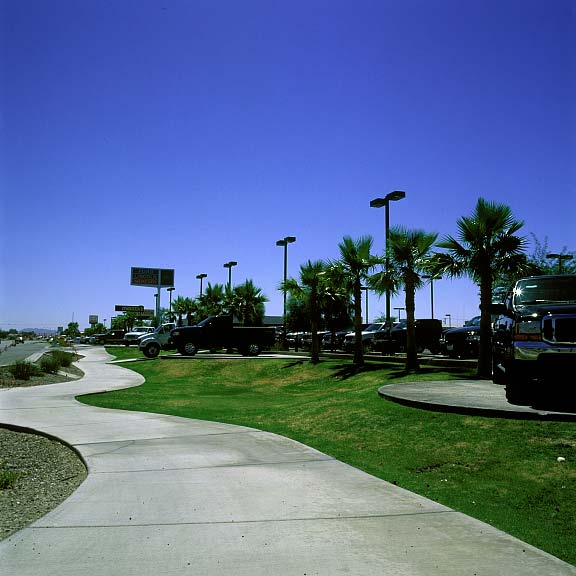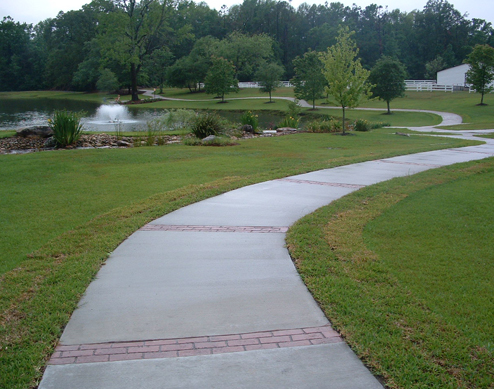We live in the area of Southern California kindly regarded though seldom derided as the Inland Empire. It’s an area known more for its tracts of rooftops and a prevalence of strip malls than for any attraction. A benefit to living in the middle of Southern California is its central location to many activities.
With the addition of a newborn, our excursions are somewhat limited for now, but we anticipate embarking on future adventures, most within a 60 mile radius of our home in Eastvale. Elia and I have lived in the area for several years and still are exploring to discover nearby activities for our family. We have been almost everywhere from Palm Desert to Los Angeles looking for new sights and landmarks. Although we’ve had to search, we’ve discovered something in just about every city of the desert valley east of Los Angeles.

In the mountains of Big Bear, one can ski, snowboard, mountain bike, and boat. In the winter, one can also make a snowman in any of the several public parks.
With a focus on affordability and non-obvious attraction, the following are some of the places we like to go as a family in or near the Inland Empire.
Palm Springs: Living Desert (http://www.livingdesert.org/) is a desert-themed zoo, home to animals, including several kinds of cats, native to deserts all around the world. Probably the best part of this zoo has nothing to do with animals and their habitat, rather it is the most amazing, gigantic, outdoor model train set that is about the size of half a city block.

Papa and Seb stand amazed at the edge of a vast model train landscape.
Redlands: Pharaoh’s Adventure Park (http://www.pharaohsadventurepark.com/) is a water park and theme park with medium-sized roller coasters. The Redlands Bowl (http://www.redlandsbowl.org/) is a place of frequent live entertainment throughout the summertime, including performances from a variety of musical groups and acting troupes.
Big Bear Lake: Big Bear Lake is a fairly rugged playground for mountain biking enthusiasts, skiers and snowboarders. This place is also a scenic destination for families. In the summer, on the south side of Big Bear Lake, a couple of boat tours cast off, one a normal boat tour with a presentation on the history of Big Bear Lake, and the other is a pirate themed boat tour. On the north side of the lake, there is a nature trail that leads up the mountainside from the Big Bear Discovery Center (http://www.bigbeardiscoverycenter.com). In the winter, huge snow hills are made for tubing, or your could opt to make a snowman at one of the public parks.

In one afternoon, we learn the history of Big Bear and the FMV of numerous lake houses.
Rancho Cucamonga: Victoria Gardens is a shopping quarter designed for the entire family. In the center of the shopping district is a park with an open garden, which frequently has live entertainment. In the midst of this upscale mall, a great place to sit and enjoy the sunshine with a draft beverage, the Yard House beer garden is in view of the central garden area. During summertime, there’s a synchronized outdoor splash fountain, where kids can play in the water for free. There’s also a $3 mock train ride that our boy loves. An outdoor playground around the corner from there is also nearby a fast food court, where we can find a frozen cherry lemonade.

Here comes Seb in the caboose of the Victoria Gardens mock train.
Riverside: The Mission Inn (http://www.missioninn.com/) is an old hotel–and, I mean, a really old hotel for Southern California, established in 1876. Aside from its architectural splendor and elegant accommodations, its claim to fame is that several of the POTUS have stayed the night here. Before Seb and Amelia were born, Elia and I had stayed here on a couple of occasions. Now that we have little ones, we visit the Mission Inn every winter for the Festival of Lights and an outdoor Christmas market featuring a small ice skating rink and fresh mini-donuts.

Grandma and Grandpa stand with Grandson in the driveway of the Mission Inn.
Ontario: A Rainforest Cafe restaurant in Ontario Mills Mall is a fairly cool
place to spend an hour or so. And if you go for drinks only, you don’t have to spend
a lot of money.
South Corona: Tom’s Farms (http://shop.tomsfarms.com/) is like an old style town with an assortment of cheap activities for small children. If you like Classic Rock and motorcycles, you’ll especially feel at home here. There is a large scale train ($2) that families can take their kids on, a carousel ($2) with bobbing horses and sleighs, small scale tractors ($2) kids can drive, and occasional carnivals that operate giant inflatable bounce obstacle courses. A full-time farmer’s mart sells countless varieties of fruits, nuts, soda-pops and fresh veggies.

Tom's Farms has a train loop featuring a covered bridge and crossing. On occasion, Tom himself has been spotted engineering trainloads of families around his farm.
Central Corona: I have always wanted to take my boy to the Fender Museum
(http://www.fendermuseum.com/), home of the Fender guitar. But he’s a little young for it yet. A place we have visited is the Citrus Park Splash Zone. It’s free fun in the summertime. My boy has finally embraced water and is manning up to brave new splash challenges of shooting water from squirt gun turrets and running through water gauntlets
(http://www.splash-pads.com/citrus-park-splash-zone/).
Old Town Temecula: This is another old style town with a variety of shops and
eateries. It’s home to Penny Pickles Workshop (http://www.pennypickles.org/), the Temecula Children’s Museum, a place where kids are allowed to run around, touch everything and explore science-like exhibits. Our boy has enjoyed his visits and usually gravitated to the player piano.
Eastvale: Eastvale, like many other communities in the Inland Empire, is home to
an abundance of families with small children. Public parks are all over the
place. We take our boy to a different park almost every weekend, and we meet
new kids and new families during every visit.

A traveling carnival set up a few blocks away give Seb and Chloe a chance to play.
Chino Hills: Chino Hills also has a somewhat smaller outdoor mall that is a bit
cozier than Victoria Gardens in Rancho Cucamonga. There’s a free splash
fountain for kids and canvas-shaded outdoor tables and cushion chairs for
families. The parks in Chino Hills are the most magnificent of any we have visited in the Inland Empire.
Chino: We have uncovered a number of airport cafes in the vicinity of where we live. An airport cafe is a food establishment adjacent to the runway of a local airport. Our family has dined in the D&D Airport Cafe in Riverside where we witnessed a personal aircraft take off and the Flabob Airport Cafe in Rubidoux where we saw a personal aircraft land. Our next stop is Flo’s Airport Cafe, where we will endeavor flight training.
Inside the Lines
And, of course, there are pricier, more obvious places to explore that are within a morning’s drive of the Inland Empire.
Beaches: Driving to the beach from the Inland Empire requires planning. While we do not need to spend a lot of cash to enjoy the waves and the sand, we might need to spend quite a bit of our precious time getting there. On a weekend day, we are sure to leave early, like around 8:30 a.m. or 9:00 a.m. If we leave our place much later than that, we expect to spend more than 2 hours in traffic going less than 5 mph and then we might have trouble finding a parking space whenever we finally arrive. The beaches are very popular, needless to say. To save some time on the drive home, we recently acquired a Fastrak account (http://www.91expresslanes.com/).

On a trip to San Diego, Elia and Seb wait for the next train at the Solana Beach Station.
Anaheim: Disneyland and California Adventure (http://disneyland.disney.go.com/) speak for themselves.

A dazzling light display helps us pass the hour we spend waiting in line for Small World.
Buena Park: Knott’s Berry Farm and Medieval Times are worthy recreational investments.
Irvine: Pretend City (http://pretendcity.org/) is an educational excursion for a toddler to learn the fundamentals of building a community, including earning and spending play paper money.
Pasadena: Griffith Park (http://www.griffithobservatory.org/) is vast and full of secrets.
Long Beach: Aquarium of the Pacific (http://www.aquariumofpacific.org/) is one of many aquariums along the Southern Californian Coast.
Santa Ana: The Santa Ana Zoo (http://www.santaanazoo.org/) is quite cheap, but needs upkeep.
Los Angeles: The Getty Center (http://www.getty.edu/) is an art museum that could be considered a work of art in and of itself. Universal City, Hollywood Bowl (http://www.hollywoodbowl.com/), and Center Theater Group (http://www.centertheatregroup.org/) all add character to the LA area.

Every aspect of the Getty Center is a work of art, including its structures and gardens.
San Diego: We could spend almost every weekend basking in San Diego’s perfect weather while strolling through Balboa Park (http://www.balboapark.org/), exploring the Safari Park (http://www.sdzsafaripark.org/), and learning about the world of animals at the San Diego Zoo (http://www.sandiegozoo.org/).

San Diego's Wild Animal Park is now known as Safari Park. However, wild animals--and wild children are plentiful here.
Many families call the Inland Empire home, so there are actually quite a few things for us to do here. The only catch is that we either have to pay to play, drive across town to get there, or both. It seems to have taken awhile for reliable entertainment to become established to support the massive housing boom that peaked here in 2007. Every time we find a new place, we experience a eureka moment. Maybe one of these weekends, we’ll share one with you.




















